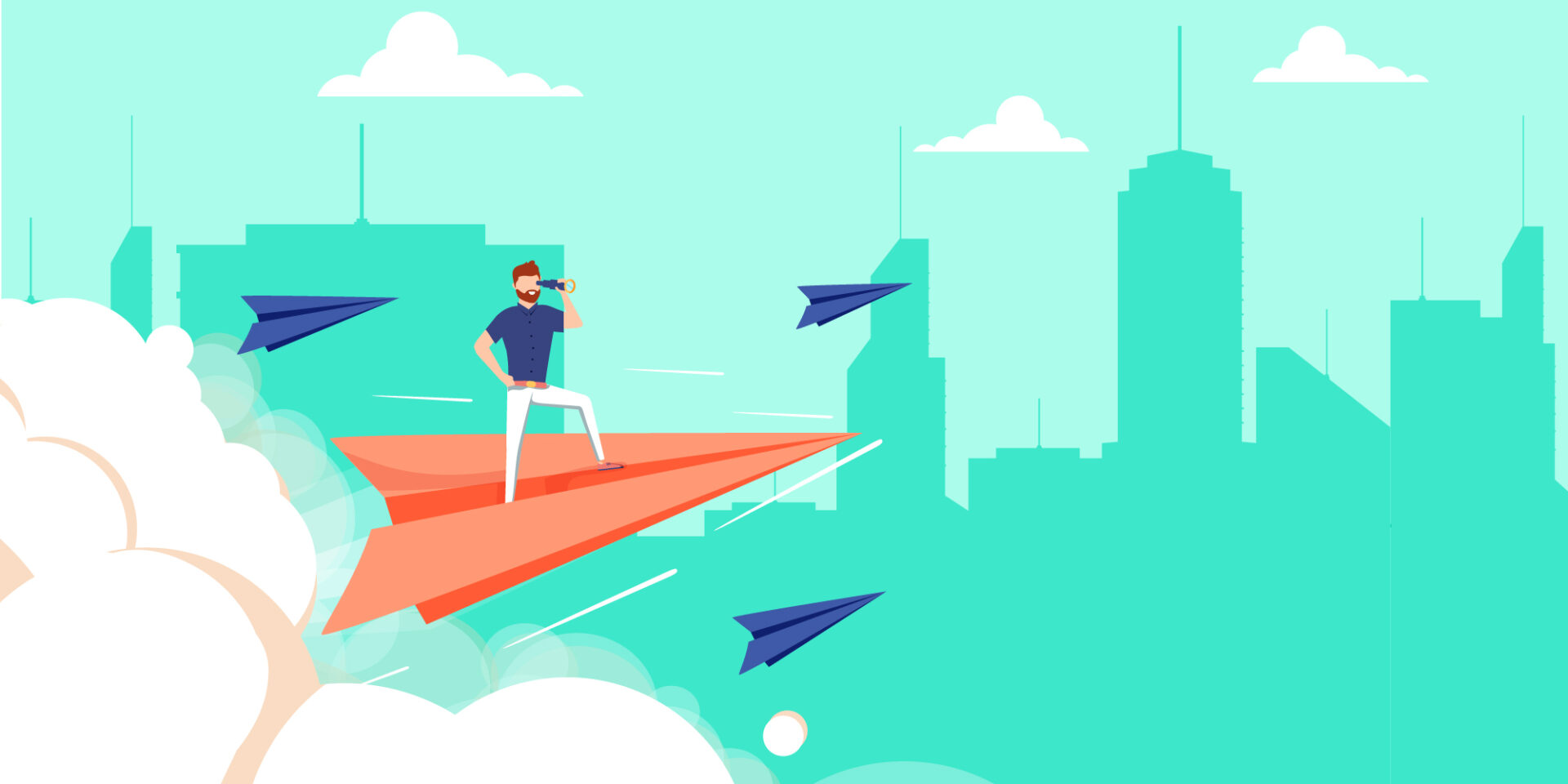By Dr Appadu Santhariah
Goods and Services Tax (GST) or Value Added Tax (VAT), had been adopted in 170 countries at the beginning of 2020¹. As one of the dominant revenue contributors, GST has raised about one third of the total tax revenue in the Organisation for Economic Co-operation and Development countries (OECD). GST is also fast becoming a major revenue raiser in most of the developed and developing countries. Notably, about 70% of the world’s population live with GST/VAT. So far only a few countries have abolished GST and most of these countries continue to operate under the GST regime during the COVID- 19 pandemic.
GST was introduced in Malaysia on 1 April 2015 and replaced the Sales and Service Tax (SST). GST, a broad-based tax, was levied at six per cent on most supplies of goods and services consumed within Malaysia. SST, on the other hand, has a cascading effect. Tax cascading means the tax is added on when the goods move through each stage of the production and distribution channel. Prior to the repeal of the GST in 2018, the government had estimated that GST would generate a stable level of tax revenue of about RM44 billion, compared to the existing SST which has raised only RM28 billion (as SST is narrower and covers far fewer goods and services).
Under the GST system due to the invoice credit system, the cascading effect can be reduced substantially thus lowering the cost to the consumer. The GST registered businesses may recover the GST paid via the credit system (i.e. offsetting the input tax against the output tax) from the Royal Malaysian Customs Department (RMCD). In Malaysia, the GST has a broad base and is imposed on about 40,000 goods and services; however, the SST has a narrow base and only captures about 40% of the locally manufactured and imported goods.
When GST was abolished by the Pakatan Harapan (PH) government, it was a political decision based on an election promise that was not based on sound economic principles. The PH manifesto stated that the main objective of the abolition was to put more purchasing power in the hands of the Rakyat, particularly the lower to middle income earners.
Research in other countries has shown that GST itself is not the cause of the increase in prices. In most cases, those price increases are caused by supply and demand for the goods and by expansionary monetary policies implemented by governments to stimulate growth. In addition, price increases also arise due to opportunistic wholesalers and retailers, which then fuels inflationary expectations.
Price increases in Malaysia
The recent announcement by the government to study the possibility of the reintroduction of GST has generated a debate on one major issue: Is GST the cause for increase in prices due to the inflationary impact of GST? It must be noted that a discussion of this concern is not new but very common whenever GST is introduced in any part of the world.
One of the main arguments put forward by the government is that GST is not the cause of the price increases as confirmed by the then Domestic Trade, Cooperative and Consumerism Minister Datuk Seri Hamzah Zainuddin, in a March 2018 news report. He stated that the rise in prices was not due to the implementation of GST and there were other factors including foreign exchange rate fluctuations, transportation, and other marketing aspects. The three factors mentioned are valid reasons for price increases, but he had inadvertently missed ‘the elephant in the room’ which is the production of goods and services to meet consumption needs of the population during the GST regime. So, this also caused price increases but it is unclear why this factor was excluded.
It is commonly argued that if GST is revenue neutral, it is unlikely to affect prices much unless the tax base is substantially different from the old tax base. In the short-term, GST will generate a temporary price hike and there will be less consumer demand for goods and services due to higher prices. Also, GST has a broader base than SST and so normally in the short-term, some prices will increase; but in the long run the prices of goods and services should fall as the embedded cost of the previous tax on business inputs are removed. So, theoretically prices will fall in the long run.
Domestic Trade and Consumer Affairs Minister Datuk Saifuddin Nasution on 12 July 2018 stated, as reported in the media, that nearly 70% of essential items saw a decline in prices since GST was zero rated from June 1 to June 30.

However, tax adviser Dr.Veerinderjeet Singh on 3 August, 2018 argued that prices of goods continued to rise notwithstanding the zero rating of GST on certain goods because the Ministry of Domestic Trade and Consumer Affairs had failed to implement the Price Control and Anti-Profiteering Act effectively. He suggested that the Ministry may need more staff well versed in the accounting systems to be able to monitor unwarranted price increases. Currently it seems this expertise is lacking in this department and illogical price increases of essential goods were prevalent when GST was in force.
A survey in Malaysia of 751 respondents conducted in 2018² showed that around 82% of the urban population and 84% of the rural population, respectively, confirmed an increase in the cost of living. Nearly all the B40 income group (84%) stated that costs had risen and a majority of the T20 income group (78%) also expressed similar concerns despite their relatively high incomes. Around 61% of the respondents stated that the main cause for high costs was due to price hikes by opportunistic traders and only 29% of respondents felt GST was the cause for the price increase.
Historically, the normal pricing of goods and services in the market is based on the production and supply of goods which is based on economic principles of supply and demand. Under the supply and demand curve, if there is an oversupply of goods, prices will fall and when there is a shortage, prices will increase. For example, there were spiralling price increases from 2005 to 2014 in Malaysia mainly due to the scarcity of goods and services, which triggered inflation long before GST came into force.
For example, in the 1970s, a sack of bananas could be purchased for about RM10. However, in 2015, even before GST was implemented, the price of bananas was extremely high, at RM1 for one banana in a supermarket. Similar price increases were also witnessed for vegetables, fish, dairy, and meat products. So, this does confirm that GST may not be the cause for price increases since all these price increases took place before GST was introduced. Let us study the experiences in other countries that have introduced GST. Was there a price increase or decrease when GST was introduced?
Experiences of price increases around the world due to GST
A study on the price effects of the findings of this study by Tait (1990)³ quoted by Narayanan (1991) suggest that, in the developing countries (14 countries or 66.7% of the sample) the tax impact was negligible on the consumer price index (CPI). Additionally, in another four cases (19%), the tax triggered a clear one-time permanent increase in the price level. In three cases (14.3%), expansionary wage credit policies were already in place which were suspected of accelerating inflation.
The Australian Treasury⁴ found that when the GST was introduced, it led to a one-off change in the price of many items. The price of many goods and services changed because of the GST reforms contained in the tax package. However, it was concluded that some prices increased while other prices remained largely unchanged or even declined. Also, another study based on eight capital cities found that the implementation of the GST in Australia showed no significant difference in prices since production of goods and services were kept in pace with the demand for goods and services needed by the population⁵.
Also, it would be reasonable to expect that the impact of GST on prices in Malaysia may mirror more closely that of Indonesia’s experience since it is also a developing country. A study on the incidence of GST in Indonesia by Kusumanto⁶ found that there were not many changes in relative prices when GST was implemented. It increased the consumption of food and beverages since it reduced the demand for food-agriculture products because production and supply were maintained to meet demand from consumers.
However, in Malaysia, prices increased during the GST regime due to traders hiking prices to protect themselves from the uncertain effects of the new tax. Also, unscrupulous traders took advantage of the unpredictable situation to increase prices. As such the supposition that GST was the cause for price increases is far from the truth. The recent report by the Market Competition Commission (MyCC) on market review of key food prices confirmed that one of the main reasons for high food prices is due to the distortion and manipulation in the food supply chain.
This article makes a 3-pronged recommendation to reduce inflationary concerns when the government considers reintroducing GST in Malaysia.
Strategies for reducing GST inflationary concerns in Malaysia.

Having established that GST is not the primary reason for increase in prices, we consider what can be done to reduce inflationary impact on prices. Malaysia is not self-sufficient in food production. The country remains a net food importer with a trade deficit of RM13.9 billion in 2011. For example, in 2010, RM30.19 billion of food imports were recorded or RM82 million a day. A 2019 study in Malaysia found, 30% of the food is thrown as waste in our dustbins which is then collected and disposed in landfills in all states in Malaysia. As a first step the government should study this matter and take steps to reduce the food waste so that less food may be imported in the long run.
The huge increase in food imports with a weak ringgit has resulted in import induced inflation which can increase prices without any tax impact. For example, let us assume that one litre of milk produced in Malaysia costs, say RM 1 per litre. If this milk is imported from Australia due to an exchange rate of RM3 to AUD1, the cost has increased to RM3 in Malaysia without other freight and transportation costs. This same principle applies to all other imported food and dairy products. Prices will increase due to the weak Malaysian ringgit. So due to our weak ringgit, we are paying more for the imported goods and services.
The simple way to reduce inflation is to reduce the quantity of food imports and increase local production of essential food such as local fruits, local animal husbandry, local fish items and so forth. A good example is the recent fall in the price of durians, the drop in prices was mainly due to oversupply not because of any taxes. Also, the recent sudden spike in computer hardware costs during COVID-19 was due to higher demand since employees and students were mainly working from home using digital technology. Again, this confirms that taxes are not necessarily the cause for price increases.
Also, national food security has been recognised as one of the key pillars of the Fourth Industrial Revolution (IR4.0). Malaysia is endowed with a large acreage of fertile idle agricultural land, relatively good weather, rainfall, and cheap labour. However, out of the eight million hectares of agricultural land available, six million are planted with oil palm and one million hectares with rubber. Only about one million hectares or just 12% of the agricultural land is used for food production.
Hence, the country needs to fully utilise idle land and diversify to commercial production of basic food products to ensure food security and save precious foreign reserves. The Malaysia Digital Economy Corporation (MDEC) has taken the lead to prove that technology can be used to increase food production to meet the food requirements in Malaysia. They found that apart from increasing food production it was observed that use of technology in farming increased productivity, quality, and income of small farmers by over 20%. So, it seems there is a potential to increase food production and reduce imports of essential food products.
Also, some of the large plantations should consider a paradigm shift in their oil palm planting strategy. They need to change the strategy by reducing acreage of planting oil palm and diversifying into food production to increase revenue since current palm oil prices are falling due to oversupply.
Thus, it can be concluded that GST was not the cause for price increases. If production of food is increased, the impact of GST would be insignificant. After all, GST simply replaced the SST and was not a new tax altogether.

Also, the government needs to investigate the status of cartels, monopolies, the distribution, and supply chains to free up the markets to reduce prices. The Federation of Malaysian Consumers Association (Fomca) has persistently advocated for a market review on the local food supply chain. Thus, all the Ministries and relevant government departments need to work together and investigate what is choking the free flow of goods from production to the final consumers. It seems the government reports have identified the reasons of overpricing in the supply chain, but corrective actions to rectify the problem effectively are not being put forth and implemented.

The government contracts’ bidding process should be more open and transparent. Corruption via overpriced contracts can cause the value of the government’s goods and services to rise, which will eventually be borne by consumers at higher prices. Also, high levels of perceived corruption could have an adverse impact on taxpayers’ attitudes towards reporting actual income. Thus, taxpayers may feel reluctant to pay taxes when the government is not seen to be checking corruption and curbing waste in the public sector.
Based on the Malaysian Anti-Corruption Report, corruption and wastage in government departments have been identified as a major issue in Malaysia. The amount due to corruption and wastage could be higher than RM22 billion, which is around 50% of the GST that was collected annually. The haemorrhaging from government coffers must be stopped first before the government decides to reintroduce GST so that it will not burden the ordinary Malaysians. The government needs to be more proactive in imposing harsher penalties against corruption, wastage, and act to liberalise the government contract procurement process as well as act quickly to curb corrupt practices.
Conclusion
The Ministry of Finance is currently undertaking a study to widen the tax revenue base including the probable reinstating of the GST. Before GST is reintroduced, the government should announce policies relating to the increase in production of goods and services to maintain food security, cut imports to reduce imported inflation, free the markets for more transparent pricing of the supply chain from producer to wholesaler, retailer and the final consumer and finally impose stiffer penalties on anyone involved in corruption and wastage of government resources. Taxpayers want to see that the taxes they pay from their hard work are well managed to provide the quality services needed by all Malaysians, especially under these uncertain times due to the COVID-19 pandemic and beyond.
Dr Appadu Santhariah is a GST researcher who was awarded a PhD by RMIT University, Melbourne in 2020.
¹ <https://read.oecd.org/10.1787/152def2d-en?format=html’ title=’Consumption Tax Trends 2020 VAT/GST and Excise Rates, Trends and Policy Issues’><img src=’https://assets.oecdcode.org/covers/340/152def2d.jpg’ alt=’Consumption Tax Trends 2020 VAT/GST and Excise Rates, Trends and Policy Issues’/></a>
² Sulaiman, N.F.C., Sanusi, N.A. and Muhamad, S., 2020. Survey dataset of Malaysian perception on rising cost of living. Data in brief, 28, p.104910.
³ Narayanan, S., 1991. The Value Added Tax in Malaysia: The Rationale, Design & Issues. Institute of Strategic and International Studies (ISIS) Malaysia.
⁴ Tax foundation (2017) Lessons from Australia’s GST Implementation for Considering the U.S. Border Adjustment. S. Hodsen dated 31 3 201 https://taxfoundation.org/lessons-australia-gst-us-border-adjustment/.
⁵ Valadkhani, A. and Layton, A.P., 2004. Quantifying the effect of the GST on inflation in Australia’s capital cities: An intervention analysis. Australian Economic Review, 37(2), pp.125-138.
⁶ Kusumanto, B., 1989. Incidence of value-added tax in Indonesia: A general equilibrium analysis (Doctoral dissertation, University of Illinois at Urbana-Champaign).






